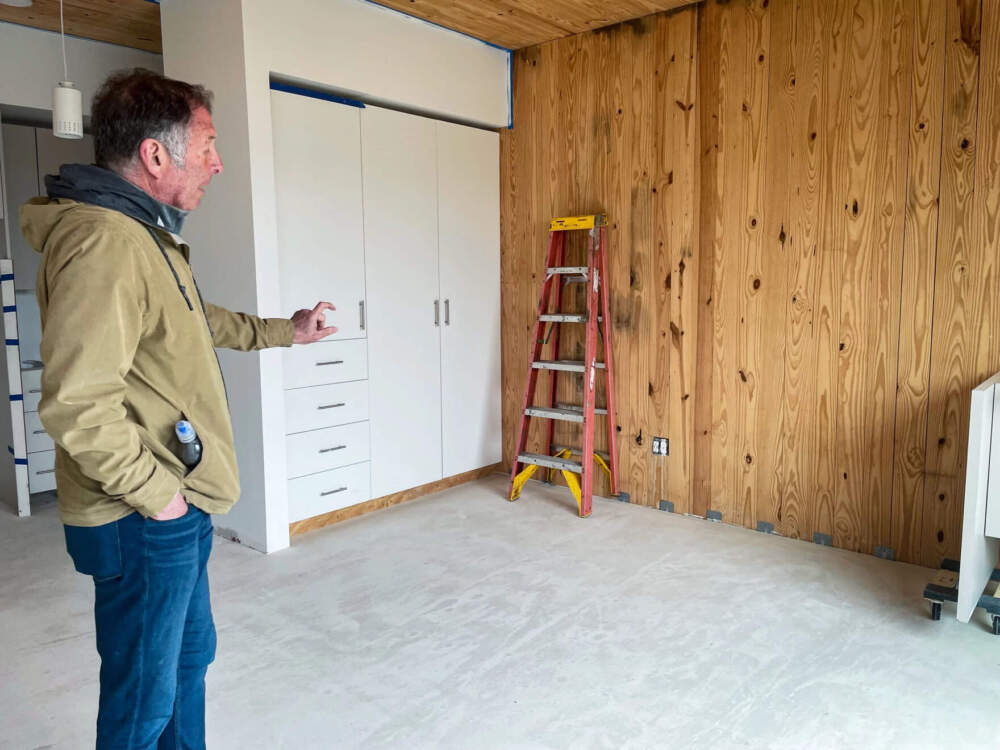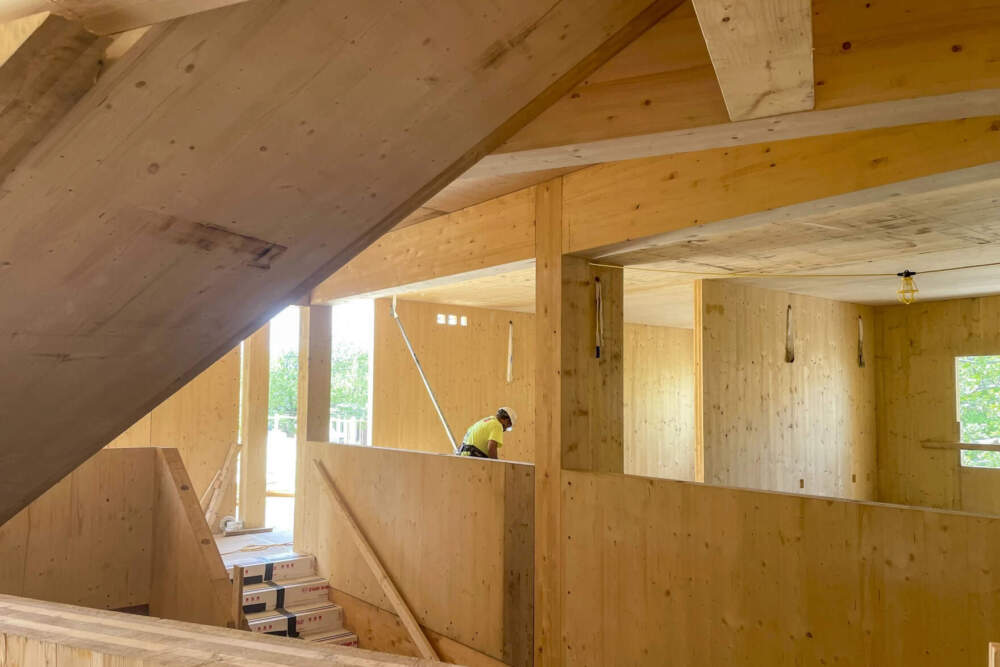Advertisement
The push for mass timber as a sustainable housing solution in New England

In a remodeled furniture factory-turned-apartment building in New Haven, Connecticut, the walls and ceiling are all yellow pine, harvested from Alabama.
“So here we are, let’s come into the bedroom,” Jeff Spiritos, the developer, said on a site visit.
Spiritos pointed to the wood’s natural texture in the nearly completed building, as early April light filtered through the extra insulated, triple-glazed windows, designed to improve ventilation.
“The gaps in between wood, it's something that's natural and we're not trying to hide the fact that it's natural wood,” Spiritos said.
Across New England, developers are looking for new ways to increase affordable housing inventory, and some are trying to do so by using a building method known as mass timber, to inflict less environmental damage.
The building will be home to 18 apartments, with the top two floors constructed totally of mass timber.
Spiritos is also in the midst of constructing another mass timber apartment building in New Haven that will be home to many residents with low incomes, earning 25% of the area’s median income.
Mass timber, short for massive timber, is a construction model that uses pre-manufactured solid wood panels in place of concrete and steel, which are major emitters of carbon dioxide.
Using a renewable source and with most of the pieces manufactured elsewhere and pieced together on site, labor costs and environmental impact are less.
“The environment is really causing us to [do this], that's the mandate,” Spiritos said. “The affordability crisis is a mandate, and when you put them two together, you're really getting to the system of mass timber being worth a real second look.”
Mass timber in climate-friendly housing
While it’s been used for decades in Europe and the Pacific Northwest, in recent years there’s been an increase in mass timber construction in New England, though not to the degree proponents would like to see. Some say it could be key to creating sustainable new housing in the region.
Amanda Smith, a researcher specializing in buildings with the nonprofit Project Drawdown, said to create more climate-friendly buildings, we need to look at reducing the amount of energy buildings use in their every day operation, and reducing the amount of emissions created in the construction of the buildings.
That’s where mass timber has the most potential, Smith said. Using wood to create strong walls and beams requires much less use of fossil fuels.
“It's important to look into the forestry practices of where you're sourcing that mass timber from. But it's maybe our best hope for reducing our use of concrete and steel,” Smith said.
Expanding mass timber in New England
It may be hard to replace carbon and steel in our tallest skyscrapers, but mass timber buildings are getting taller, said Ricky McLain, with the Wood Works Products Council. A 2021 building code change allowed mass timber buildings to go up to 18 stories, McLain said.
“In those taller buildings, they're nearly all multifamily for mass timber. So then I think what that did was, opened people's eyes to see, ‘Okay, mass timber can be used in multifamily, does work well in multifamily,’” McLain said.
But McLain sees a few reasons it’s not being used more often for housing in the Northeast. Mass timber often has a higher upfront cost, because currently the wood for mass timber is shipped from the southern states, Canada and Europe.
“That's very difficult to convince, you know, a private developer, who is maybe trying to do an affordable housing project and costs are extremely, extremely important,” he said.
McLain said costs would go down if there were mass timber suppliers in New England, but that requires more existing mass timber constructions.
“The potential suppliers that are looking at coming, they want to see that the demand is already here,” McLain said. “They don't want to hear there's interest, they want to see that there are real projects. So, it's a chicken and egg problem.”

Where mass timber can be cheaper is in labor costs. Mass timber projects typically need between six and 10 workers, a fraction of the number used in steel and concrete constructions, McLain said.
“The fact that you're needing that much fewer laborers on site is beneficial in sites where there's not that much availability of labor,” McLain said.
Supporting the region’s timber industry
Of course, what New England has is plenty of trees, and foresters looking to sell their wood.
A mass timber industry in New England would create a new market for wood, leading to more forest maintenance as trees are harvested, according to Chad Oliver, a professor emeritus at the Yale School of Forestry. Oliver calls it a “triple win.”
“We have better biodiversity,” Oliver said. “We have less fire and CO2 pollution from fires and we have less CO2 pollution from building things out of steel and concrete.”
The biggest challenge facing mass timber in New England is that it’s still new here, and it would be more utilized in housing developments if more people understood the benefits, according to Oliver.
“There's a lot of misinformation that leads people to think it's not environmentally sound, when in fact, it's extremely environmentally sound,” Oliver said. “New England would come around to that. Certain incentives could be put in that would really help it move faster.”
This story is a production of the New England News Collaborative. It was originally published by Connecticut Public.